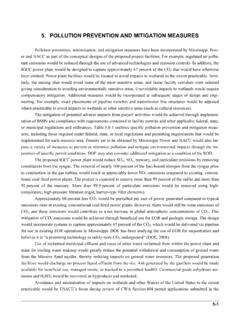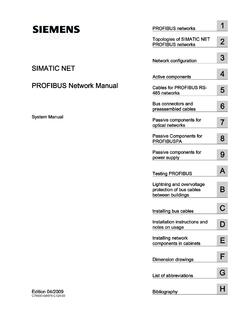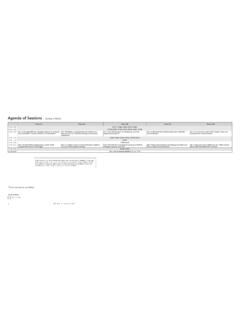Transcription of Natural Gas Leak Detection in Pipelines
1 Technology Status Report on Natural Gas Leak Detection in Pipelines Prepared for Department of Energy National Energy Technology Laboratory 3610 Collins Ferry Road, P. O. Box 880 Morgantown, WV 26507-0880 by Yudaya Sivathanu En Urga Inc. 1291-A, Cumberland Avenue West Lafayette, IN 47906 Contract Number: DE-FC26-03NT41857 Distribution: Attn: Daniel Driscoll, NETL Jongmook Lim, En Urga Inc. Vinoo Narayanan, En Urga Inc. ANALYSIS OF COMBUSTION SYSTEMS DISCLAIMER "This Technology Status Report was prepared with the support of the Department of Energy, under Award No.
2 DE-FC26-03NT41857. However, any opinions, findings, conclusions, or recommendations expressed herein are those of the author and do not necessarily reflect the views of the DOE". 1 Technology Status Report: Natural Gas Leak Detection in Pipes Introduction Natural gas consumption in the US is expected to increase 50% within the next 20 years (Anderson and Driscoll, 2000). At the same time, the gas delivery infrastructure is rapidly aging. The Department of Energy has stated that ensuring Natural gas infrastructure reliability is one of the critical needs for the energy sector.
3 The largest component of the Natural gas infrastructure is the approximately 400 thousand miles of delivery Pipelines . Therefore, the reliable and timely Detection of failure of any part of the pipeline is critical to ensure the reliability of the Natural gas infrastructure. This report reviews the current status of the technology for leak Detection from the Natural gas Pipelines . The first part briefly reviews various leak Detection methods used in the Natural gas Pipelines .
4 The second part reviews the optical methods used for Natural gas leak Detection , and the final part reviews the potential sensors that can be used with optical methods. Review of Leak Detection Methods There are a variety of methods that can detect Natural gas pipe line leaks, ranging from manual inspection using trained dogs to advanced satellite based hyperspectral imaging (Carlson, 1993; Scott and Barrufet, 2003). The various methods can be classified into non- optical and optical methods.
5 The primary non- optical methods include acoustic monitoring (Hough, 1988; Klein, 1993); gas sampling (Sperl, 1991), soil monitoring (Tracer Research Corporation, 2003), flow monitoring (Turner, 1991; Bose and Olson, 1993), and software based dynamic modeling (Griebenow and Mears, 1988; Liou and Tain, 1994). Acoustic monitoring techniques typically utilize acoustic emission sensors to detect leaks based on changes in the background noise pattern. The advantages of the system include Detection of the location of the leaks as well as non-interference with the operation of the Pipelines .
6 In addition, they are easily ported to various sizes of pipes. However, a large number of acoustic sensors is required to monitor an extended range of Pipelines . The technology is also unable to detect small leaks that do not produce acoustic emissions at levels substantially higher than the background noise. Attempts to detect small leaks can result in many false alarms. Gas sampling methods typically use a flame ionization detector housed in a hand held or vehicle mounted probe to detect methane or ethane. The primary advantage of gas sampling methods is that they are very sensitive to very small concentrations of gases.
7 Therefore, even very tiny leaks can be detected using gas sampling methods. The technique is also immune to false alarms. The disadvantages of the technology are that Detection is very slow and limited to the local area from which the gas is drawn into the probe for analysis. Therefore the cost of monitoring long Pipelines using gas sampling methods is very high. In soil monitoring methods, the pipeline is first inoculated with a small amount of tracer chemical. This tracer chemical will seep out of the pipe in the event of a leak.
8 This is detected by dragging an instrument along the surface above the pipeline. The advantages of the method include very low false alarms, and high sensitivity. However, the method is very expensive for 2monitoring since trace chemicals have to be continuously added to the Natural gas. In addition, it cannot be used for detecting leaks from Pipelines that are exposed. Flow monitoring devices measure the rate of change of pressure or the mass flow at different sections of the pipeline. If the rate of change of pressure or the mass flow at two locations in the pipe differs significantly, it could indicate a potential leak.
9 The major advantages of the system include the low cost of the system as well as non-interference with the operation of the pipeline. The two disadvantages of the system include the inability to pinpoint the leak location, and the high rate of false alarms. Software based dynamic modeling monitors various flow parameters at different locations along the pipeline. These flow parameters are then included in a model to determine the presence of Natural gas leaks in the pipeline. The major advantages of the system include its ability to monitor continuously, and non-interference with pipeline operations.
10 However, dynamic modeling methods have a high rate of false alarms and are expensive for monitoring large network of pipes. Review of optical Methods optical methods of leak Detection can be classified as either passive or active (Reichardt et al., 1999). Active methods illuminate the area above the pipeline with a laser or a broad band source. The absorption or scattering caused by Natural gas molecules above the surface is monitored using an array of sensors at specific wavelengths. If there is significant absorption or scattering above a pipeline, then a leak is presumed to exist.

















